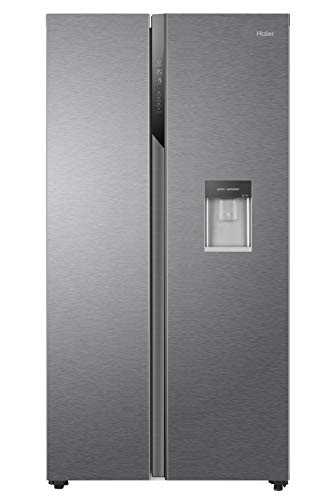
Fridge Freezer Deals
Add a review FollowOverview
-
Posted Jobs 0
-
Viewed 108
Company Description
10 Things You Learned From Kindergarden To Help You Get Started With Fridge UK
The Comprehensive Guide to Refrigerators in the UK
Refrigerators are a necessary home appliance in every family, serving an essential role in food conservation and safety. The UK market offers a varied variety of fridge types, sizes, functions, and brand names. This post aims to supply a thorough understanding of fridges readily available in the UK, including their functions, energy effectiveness, and aspects to consider when buying.
Kinds Of Refrigerators Available in the UK
When trying to find a refrigerator, it is very important to comprehend the various types offered. Each type comes with its own set of functions and functions, catering to various needs and choices. The most common kinds of fridges found in the UK consist of:
1. Leading Freezer Refrigerators
- Description: The standard design, featuring the freezer compartment on top.
- Pros: More economical, spacious, simple access to fresh food.
- Cons: Limited freezer space, the top may be less convenient for bulk items.
2. Bottom Freezer Refrigerators
- Description: Freezer lies at the bottom, allowing much easier access to fresh food.
- Pros: Greater convenience, much better presence of fresh items.
- Cons: Usually more expensive, some may battle with large fridge Freezer uk frozen products.
3. Side-by-Side Refrigerators
- Description: Features 2 vertical compartments, one for the fridge and one for the freezer.
- Pros: Ample storage area, simple to gain access to both frozen and fresh foods.
- Cons: Wider footprint, they may not fit in smaller sized kitchens.
4. French Door Refrigerators
- Description: Combines features of bottom freezers and side-by-sides, with two doors for the fridge on top.
- Pros: Stylish design, large, and typically includes advanced functions.
- Cons: Higher rate point, lines up improperly with smaller sized cooking area designs.
5. Compact Refrigerators
- Description: Smaller designs designed for restricted areas.
- Pros: Ideal for little apartment or condos or offices, energy-efficient.
- Cons: Limited storage capability, might do not have functions.
6. Integrated Refrigerators
- Description: Designed to blend effortlessly with kitchen cabinets.
- Pros: Custom fit, aesthetic appeal, increases home value.
- Cons: Higher expense, might provide less flexibility in positioning.
7. Smart Refrigerators
- Description: Equipped with Wi-Fi and wise innovation features.
- Pros: Advanced features like touch screens and internal cams.
- Cons: Expensive, more intricate to repair.
| Leading Freezer | Moderate | ₤ 300 – ₤ 600 | Average |
| Bottom Freezer | High | ₤ 400 – ₤ 800 | Above Average |
| Side-by-Side | Easy | ₤ 800 – ₤ 1500 | Varies |
| French Door | High | ₤ 800 – ₤ 2000 | High |
| Compact | Limited | ₤ 200 – ₤ 500 | Typical |
| Integrated | Custom | ₤ 1000 – ₤ 2500 | High |
| Smart | Variable | ₤ 1200+ | High |
Key Features to Consider
- Energy Efficiency: Look for models that are energy-efficient. In the UK, home appliances are rated from A (most efficient) to G (least efficient). An A+ score and above can cause significant energy cost savings.
- Capacity: Choose a fridge with enough capability for your household. A standard guideline is 100-200 liters per individual.
- Noise Level: Consider models that run quietly, particularly if the kitchen is near living spaces.
- Cooling Technology: Features like frost-free technology deserve the investment, as they lessen maintenance.
- Adjustable Shelves: Having adjustable racks enhances the flexibility to keep bigger items.
- Temperature level Control: Check for user friendly temperature level controls and zones for different types of food.
- Design: Choose the style and color that matches your kitchen area aesthetic, whether you prefer a contemporary stainless steel look or a timeless retro surface.
Buying Tips
- Identify Your Needs: Consider your cooking habits, household size, and kitchen area.
- Set a Budget: Refrigerators come in different price ranges. Develop a spending plan before you begin shopping.
- Research Study Energy Ratings: Invest in energy-efficient designs to minimize energy bills.
- Read Reviews: User experiences can supply insights into reliability and efficiency.
- Compare Brands: Some brands are understood for their resilience while others might offer more ingenious features.
Often Asked Questions (FAQs)
1. The length of time do fridges usually last?
- Fridges normally last in between 10 to 20 years, depending upon the brand and how well they are kept.
2. Exist any upkeep pointers for prolonging the life of a refrigerator?

- Regularly clean the coils, inspect the door seals, and occasionally thaw if needed to keep optimal performance.
3. What is the best size refrigerator for a family of 4?
- For a household of 4, a refrigerator with a capability of around 400-600 liters is normally adequate.
4. Do I need to stress over energy usage when buying a refrigerator?
- Yes, energy intake is very important. Try to find units with high energy efficiency rankings to lower monthly costs.
5. Should I select a fridge with a water and ice dispenser?
- This feature can be convenient, especially for households. However, it may require more upkeep than standard models.
Purchasing a refrigerator is a significant choice for any household in the UK. With various types readily available, each with its special features and advantages, it is crucial to assess private requirements before making an option. By thinking about aspects such as energy effectiveness, capability, and style visual appeals, consumers can select a fridge that lines up well with their way of life, ultimately enhancing their kitchen area experience while safeguarding food quality and freshness.
